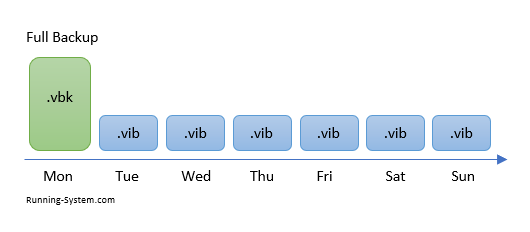
A SOBR is used as a single target for backup and copy jobs. Scale-out backup repository (SOBR): A SOBR is a logical entity that consists of one or more backup repositories that are configured as tiers. Let’s look into some of the concepts involved with Veeam Backup & Replication. You will also have information to decide on which approach would work best for your organizations use case, including any caveats to watch out for when implementing these integrations. By the end of this post, you should have a better understanding of how the integration between Veeam Backup & Replication with AWS Storage services works. In addition, we discuss strategies to help you leverage Veeam Backup & Replication to recover your on-premises workloads in AWS as Amazon EC2 instances for disaster recovery (DR) purposes. In this blog post, we review the options and best practices available to Veeam customers looking to integrate with AWS Storage services based on knowledge learned both in the lab and in the field. Capacity tier is an additional tier of storage that can be attached to a scale-out backup repository. In February 2020, Veeam released Veeam Backup & Replication Version 10, adding additional functionality to capacity tier.
VEEAM BACKUP INCREMENTAL UPDATE
Initially released in January 2019 in version 9.5 Update 4, Veeam Backup & Replication has been used by customers such as Best Friends Animal Society (case study) to enhance their DR strategy while providing cost savings. Veeam Backup & Replication enables customers to automatically tier backups to Amazon S3 to help reduce their reliance and costs associated with more expensive on-premises backup storage. AWS Storage services such as Amazon S3, AWS Storage Gateway, and AWS Snowball Edge seamlessly integrate with Veeam Backup & Replication to meet these needs. They also want to ensure that their backups reside in highly durable, cost effective storage. Below is a table that is a good quick reference to understand the impact each method has on the backup repository.Many customers are using Veeam Backup & Replication to protect their on-premises infrastructure and want to reduce the amount of physical backup infrastructure that they need to purchase and maintain.
VEEAM BACKUP INCREMENTAL FULL
The benefit of having a weekly full to reference increases restore performance, whereas forever forward incremental can have poor restore performance if it's rehydrating data from a full taken weeks ago. Weekly synthetic or active fulls must be ran. With the power of forward incremental comes great responsibility though. Forward incremental on the other hand is 1 write I/O which allows for much faster backups.

The only difference is that the VBK in reverse incremental is always your latest recovery point, allowing for faster restores from the most recent point in time.

The same is true for reverse incremental.

Forever forward incremental is 3 I/Os per backup on the repository because on every backup a merge process takes place to combine the full backup file (.VBK) with the oldest incremental file (.VIB). First, it's important to understand the three backup methods within Veeam forward incremental, forever forward incremental, and reverse incremental.


 0 kommentar(er)
0 kommentar(er)
